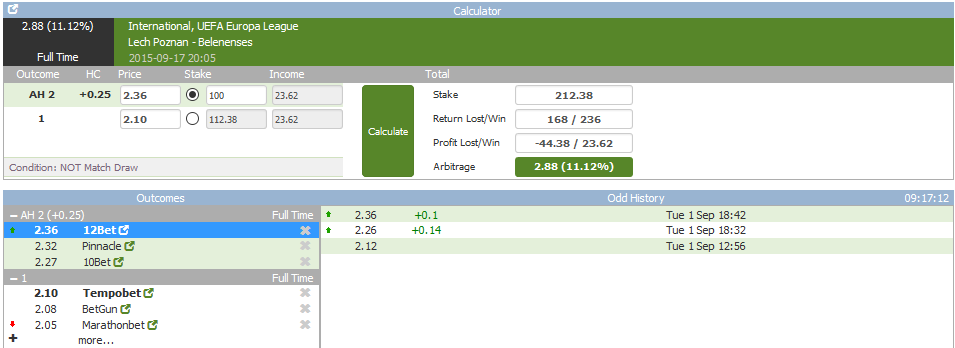Estimated Read Time: 5 minutes
See All Guides
A PUSH in sports betting is when a total is a whole number like 48 points and the combined score hits it exactly. For instance, let’s pretend the Patriots are playing the Saints and the total is set at 48. If the final score is 28-20, that would be considered a PUSH since all points scored equal 48. Hedge win result: Rams win and the bettor wins $2,000. After everything, the $1,000 hedge minus $100 original wager gives a final win of $900. Worst result: No hedge and Rams win. $100 wager and the potential $6,000 win is completely lost. This example shows that a hedge on a futures bet is still a profitable wager.
Do you know what a ‘parlay’ means? Have you heard of Martingale staking? There are lots of online sports betting systems, and before you can start betting, you’ll need to understand the most common ones. There are systems for everything under the sun, but we’ll stick to the four major sports: baseball, basketball, football, and hockey.
We’ll teach you how to use online betting systems to develop a strategy and start making money! Our guide will also show you which system is best for betting wisely and recouping your losses.
What Is an Online Betting System?
These systems give bettors patterns to help them to increase earnings by giving strategies to win. Betting systems may also be known as ‘staking plans’ or ‘staking formulas’. Some work by betting more when you win, while others function well by decreasing wagers as you lose.
Negative Progression Systems
Negative progression systems sound big and fancy, but think about it like this: losing is always negative. In this case, you increase your stake each time you lose. You may be thinking, “Wait! Why would I increase my bet if I lose?” The idea is to make up for your loss with a win on the current bet. This method can be super successful, but be careful: If you start a losing streak, you may get in over your head.
This is a common strategy in casino games, but it’s often applied to the four major sports, too. Three sub-strategies include the Martingale, D’Alembert, and Labouchere plans.
Martingale Staking Plan
The Martingale System involves progressively betting more every time you lose. For example, you started with a $100 bet and lose, will then double your bet. You continue doubling each successive bet until you win ($100, $200, and so on.). By the time you arrive at the fifth bet, you’d be shelling out $1600, so the risk is high. The gain, however, could be quite rewarding.
D’Alembert Betting Theory
While similar to the Martingale strategy, the D’Alembert system works a little differently to increase your bets more slowly. The slower rise in stakes means that it’s less likely that your bets will become impossible to bankroll and won’t let you recover your losses as quickly as the Martingale, but it also mitigates risk.
This method assumes that there’s an equilibrium to be found in even money bets. Statistically speaking, you should always win the same number of bets you lose. Using this assumption, you choose a percentage of your total bankroll to use for each bet. You can select any percentage, but we recommend using 1-5% of your bankroll on every bet.
Say that you have a $1000 bankroll. At 2%, your first bet is $20. If you lose, you’ll increase your gamble by one base unit ($20), so it’s $40. Each time you lose, increase your bet by one base unit until you win. Every time you win, you’ll decrease your bet by one base unit.
Labouchere Betting System
The Labouchere splits your bet into several wager amounts. Think about it like you have a pile of M&Ms that you divvy up to avoid eating all at once.
Wager amounts are units totaling the value you’d like to win. So, if you’d like to win $100, you break this number into a bunch of smaller ones, like the following: $10, $20, $40, $20, $10. After placing your first wager, your potential winnings will need to be your first unit plus your last unit, or $20.
We’ll say you won your first wager and made the $20 required. You will cross off the $10 at the beginning and the $10 at the end. If you lost, you’d add the $20 you lost to the last $10. Add the $10 and $20 – the first and last units again. Your wager will be $30.

If you keep losing, you’ll keep adding your wager to the end. If you win, you’ll cross off both the first and last units.
Experts don’t really recommend this betting pattern if you’ve got a small bankroll. It can become costly quickly, which can leave you out of pocket and frustrated.
Insurance Betting System
This is exactly what it sounds like. Start with a bet, like $50. To keep numbers easy, we’ve chosen $5 as your unit. With each sequential bet you lose, simply reduce your bet by a unit ($45, $40, $35). As you can see, it’ll protect you from losses but won’t allow you to win your losses back.
Positive Progression Systems
Positive progression systems are the exact opposite of negative ones. Raise your stake for each win, rather than each loss. If you’re on a losing streak, this system probably won’t let you win back your losses. A few strategies that fall under this system are the Paroli and parlay systems. Be careful about using a progression system if you have a limited wallet.

Paroli Formula
The Paroli formula is used in ‘even wager betting’. Experts suggest that a 2% base stake is a good place to start. Double your bet each time you win and, after winning 3 times in a row, drop your bet back down to the base stake. If you lost, simply cut your bet to the base stake and use it until you win again.
Parlay System
In essence, a parlay is multiple wagers in one, and the system allows you to reinvest winnings from one wager to the next. To successfully use this method, you’ll need to choose the winning team for every option you’ve selected. This makes the odds higher and you’re definitely increasing your chances of losing, but winning makes the profits much sweeter.
Other Types of Sports Betting Systems
In the end, most systems boil down to fixed, variable, and proportionate systems like the Fibonacci, unit, and Oscar’s Grind.
Fixed systems are simply systems where you place a fixed amount on each wager. Variable staking, however, works the opposite way. You have to calculate your wagers based on a variety of criteria (eg. confidence level, odds).
Proportionate systems require betting a portion of your bankroll (or balance) and then increasing by that same percentage after each win. For example, if you had a $100 bankroll and bet 10%, you’d bet $10 the first time.
If you won, you’d add your winnings and find 10% of your new total for the next wager. For instance, if you won $20 you would add this to the $100. You then find 10% of $120, which is $12.
Fibonacci System
Using this methodology, you’ll increase your bets based on the Fibonacci sequence. Start by choosing your betting unit. We always recommend 2-3%.
The Fibonacci sequence starts with zero, but ignore that number and start with the second number (1). The sequence is as follows, 1, 1, 2, 3, 5, 8, 13, 21, 34 and so on. Chose a unit to use. We’ll use $5 to make the math easy. The Fibonacci numbers tell you how many units to use.
Your first bet is – $5 or 1 unit. You lose. Place your second bet, also $5 or 1 unit. You lose again. Place your third bet, $10 or 2 units. Now you win. Move down 1 unit to $5 or 1 unit.
The Unit System
As we’ve seen in other strategies, the unit system uses a range assigned by the bettor. These typically fall between 1 and 10, and are based on the confidence a bettor has in the wager. You reserve a 10 for that very rare wager that stands out. The 1 is for your most certain stakes. Each unit will be a percent of your wallet. Most often, each is valued at 1% of your balance.
Successful Betting Strategies

Choose staking formulas that are successful rather than complicated or trending. We’ve discussed the most common and widely used, but you should find one that works for you. It really comes down to choosing a system that’s easy to use and calculate, and sticking to that system. If you’re constantly switching things up, you’ll never learn what works best for you.
If you’re looking for even more success as a sports better, apply these simple sports betting strategies!

In the world of sports betting, a money line bet is simply betting on which team you expect to win. It doesn’t have anything to do with a spread. You may also see a money line bet listed as “Money Line” or “ML” in different spaces.
Money lines are represented in negative and positive values.

Negative money line: -145, -220, or anything similar
When you see a minus (-) sign in front of a price, it shows you that team is the favorite to win the game.
That number also indicates how much money you need to bet/spend in order to win $100.
For example, a -220 money line means you need to bet $220 in order to win $100 provided the team you bet on actually does win.
Heavy favorites are known in sports betting as a “chalk” pick. A heavy favorite usually has a number pushing +300 or more. Here, you’re wagering a lot on the favorite to win a little. Don’t assume that a heavy favorite, or chalk pick, is a guaranteed winner…
Positive money line: +145, +220, or anything similar
When you see a plus (+) sign in front of a price, it shows you that team is the underdog. Higher numbers like +400, +500, +5000, etc. represent how much of an underdog the team is in the game. The higher the number the more likely the team is expected to lose in the eyes of the oddsmakers.
Sports Betting Explained
The number also indicates how much money would win in comparison to every $100 you wager.
For example, a +150 money line means you would win $150 for each $100 wager you place should that team win the game.
Sports Betting Examples Meaning
Money line examples:
Betting On Sports Games
Lets use an NFL example here:
New England Patriots -240
Miami Dolphins +220
To bet the New England Patriots to win on the money line, you would need to spend $240 on the bet for a chance to win $100 if the Patriots beat the Dolphins. Your return would be $340 – the original $240 stake (bet) and the $100 bet profit.
To bet the Miami Dolphins to win on the money line, you would spend $100 on the bet for a chance to win $220 if the Dolphins, as the underdog, beat the Patriots. Your return would be $320 – the original $100 stake (bet) and the $220 profit.
In both situations, it doesn’t matter if the team you bet on wins by one point or 100 points. You’re purely betting on the team you believe will win the game. As Al Davis said, “Just win, baby.” That’s exactly what you’d be looking for out of your selection. It doesn’t have to be pretty, it just has to happen or your original stake is lost.